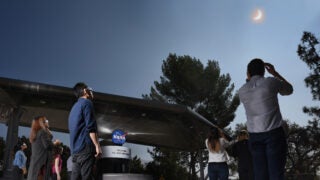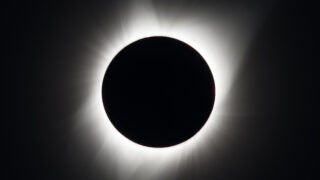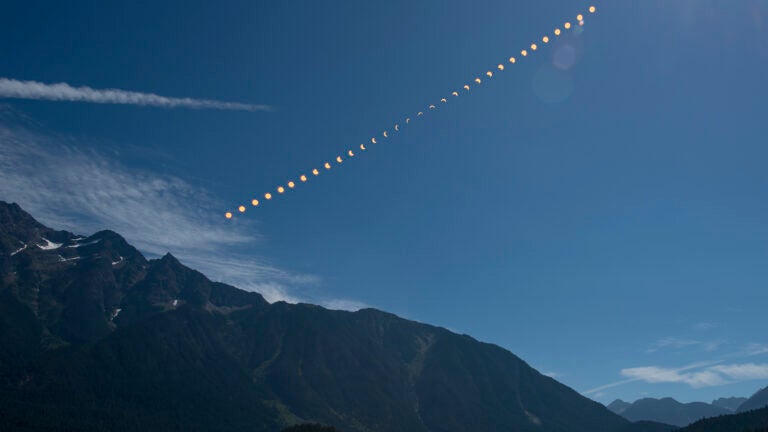
This composite image shows the progression of a partial solar eclipse over Ross Lake in Washington on Aug. 21, 2017. This year, a total solar eclipse will sweep across a portion of the contiguous United States on April 8. (Photo/NASA-Bill Ingalls)
How to photograph the total solar eclipse
A guide to the equipment and techniques you’ll need to capture the celestial rarity on camera.
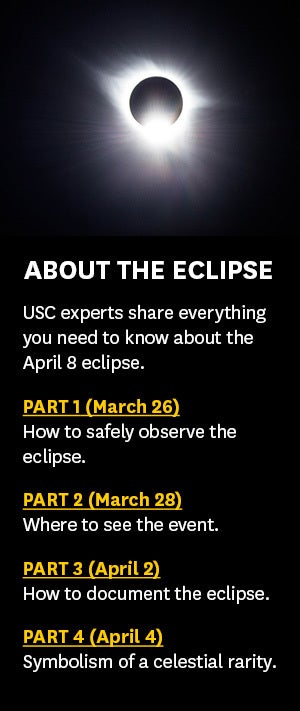 They’re doorways to scientific discoveries. They’ve inspired myths both modern and ancient. And, if not viewed properly, they can cause blindness.
They’re doorways to scientific discoveries. They’ve inspired myths both modern and ancient. And, if not viewed properly, they can cause blindness.
Total solar eclipses — which occur when the moon passes between the Earth and the sun, temporarily blocking the sun’s brilliance — are rare phenomena. On April 8, 2024, a total solar eclipse will be visible from the contiguous United States for the first time since 2017, and the next one won’t be visible from U.S. soil until 2044.
In USC News’ four-part series on the eclipse, USC experts weigh in on multiple aspects of this extraordinary celestial event: how to safely view the eclipse, the best place to see it, how to photograph it, and its symbolism.
Part 3: How to photograph the total solar eclipse
The solar eclipse is a compelling photographic subject — not only for its celestial beauty but also for its rarity. Capturing it on camera warrants some safety precautions.
Just as you should never look directly at the sun without protective eyewear, you should never look directly at it through a camera lens without a solar filter to block the sun’s harmful UV and infrared rays.
“Unless you have a solar filter, you’re going to damage the camera, and you’re going to damage your eyes looking through the camera,” said Vahé Peroomian, professor (teaching) of physics and astronomy at the USC Dornsife College of Letters, Arts and Sciences, who is passionate about photographing astronomical events. He explained that without a filter, the intense heat of the sun can warp the camera lens.
Even with the proper filter, it’s not advisable to keep your camera pointed at the sun continuously because the filter itself can absorb heat. “You want to be shooting and then pointing away, shooting and then pointing away,” Peroomian said.
The only exception is that those in the path of totality may remove the camera filter during the brief interval when the sun is completely blocked by the moon. However, misjudging the timing of totality by even a few seconds can lead to eye damage.
The best solar filter for your camera or smartphone
If you’re using a stand-alone camera, you can purchase a solar filter that fastens to the front of your camera lens. The American Astronomical Society (AAS) maintains a list of reputable companies that sell camera filters that meet established safety standards.
The AAS also has a list of recommended solar filters and apps designed for smartphone cameras. Peroomian noted that solar eclipse glasses that meet international safety standards can also be used with your smartphone.
“You can literally put eclipse glasses in front of your phone camera lens and take your picture that way,” Peroomian said.
Just be sure your eyes are fully protected with another pair of eclipse glasses while doing so.
Photographic feats
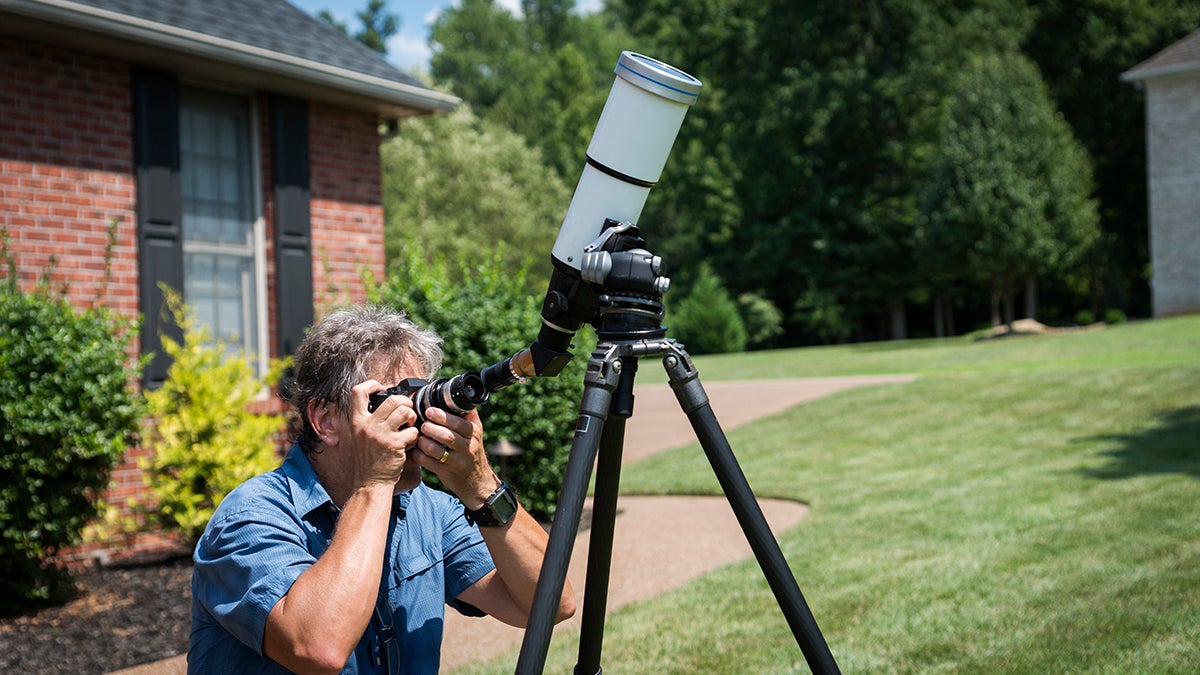
Solar camera filters slash the light from the sun so much that everything else in the frame aside from the eclipse will come out pitch dark. Any photo of an eclipse that includes a dramatic foreground is, in fact, a composite of two or more images edited together after the fact.
“You have to do a foreground shot without the eclipse filter, and then put the eclipse filter on for the sun,” Peroomian noted.
Creating composite images may help experienced photographers visualize the sun’s corona, which is the outermost part of its atmosphere. Typically, the corona is hidden from view by the bright light of the sun’s surface, but during the darkness of a total solar eclipse, it visibly glows. Because the sun is nearing the peak of an 11-year cycle called “solar maximum,” there will likely be more coronal activity on view than in 2017.
“What happens during a solar maximum is that the corona will get a little bit more structured,” Peroomian said. “You have more chance of having solar flares and having material ejected from the corona into space — called coronal mass ejections.”
Casual observers wearing eclipse glasses will not be able to see this activity, but photographers who use telephoto lenses and specialized editing software might. “You will see pictures where photographers have stacked enough images to see details in the corona,” Peroomian said.
A solar selfie
Photography figures prominently in an eclipse research project unfolding at the USC Viterbi School of Engineering, advised by Michael Kezirian, adjunct professor of astronautics practice. A group of 16 students has been working since the fall semester to figure out how to photograph the eclipse from a helium balloon that will rise approximately 100,000 feet in the air — to the edge of space.
“It’s an interesting engineering problem,” said Armen Arakelyan, a junior astronautical engineering major co-leading the project. He noted challenges like stabilizing the balloon in strong, high-altitude winds and ensuring the lens is positioned at precisely the right angle.
“There’s also kind of an artistic sense to it,” said Arakelyan. “It’s just a really cool photo that we’re trying to get.”
Their goal is to capture an image of the balloon with the solar eclipse in the background. “We’re kind of performing a selfie at three times the height of an airliner,” said Howard Hall, a first-year doctoral student in astronautical engineering who is co-leading the group with Arakelyan.
The group will travel to Del Rio, Texas, a small city approximately seven miles from the U.S.-Mexico border, to launch the balloon. The balloon itself will burst at peak altitude, but its payload will return to the ground carrying the photographic equipment. The hope is that metadata collected from the images will reveal new scientific information about the moon and solar system.

